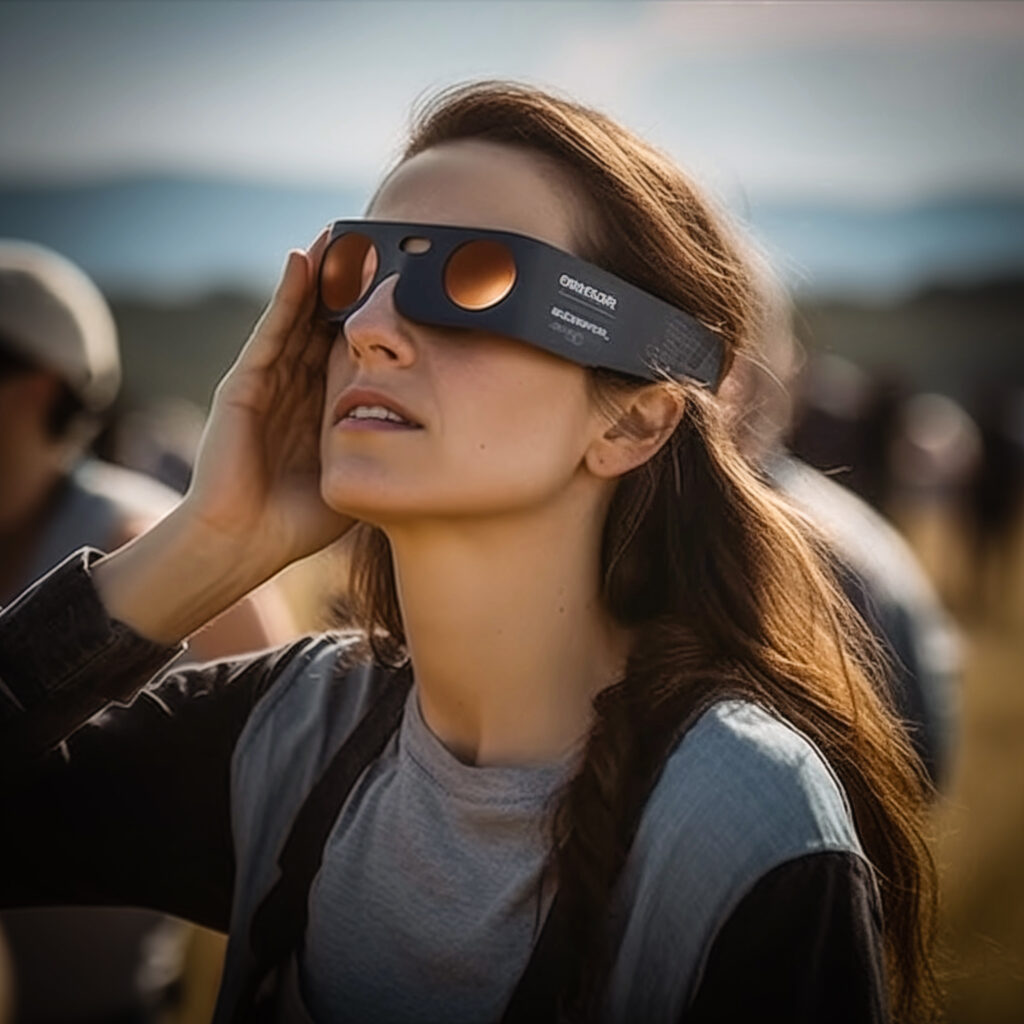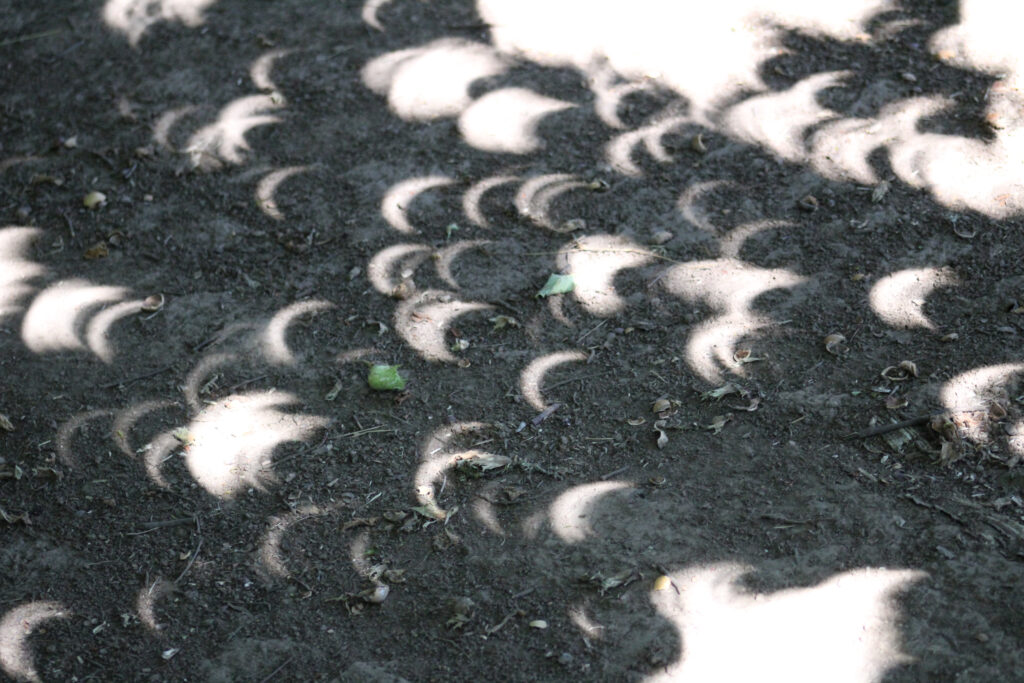Table of Contents
ToggleDarkness came over the land
On April 8 an eclipse of the sun comes to North America. 1,991 years and five days before that, an eclipse of the sun may have darkened the skies over Jerusalem during Christ’s crucifixion.
As much as any other human experience, solar eclipses embody a blending of the scientific and the spiritual.
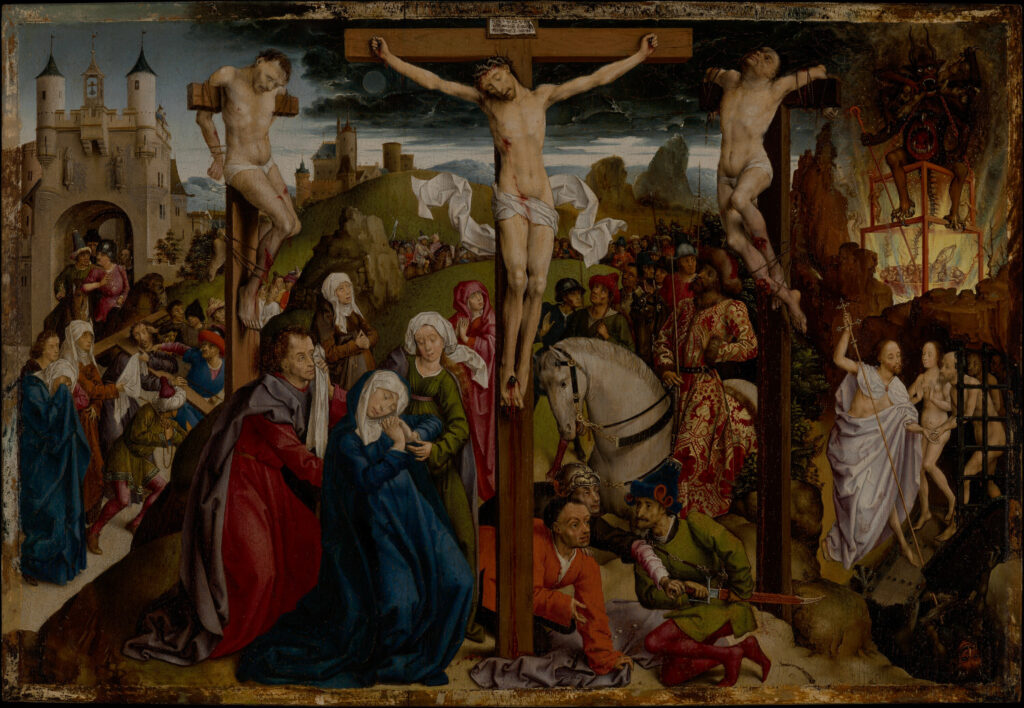
The Crucifixion, oil on panel, 191/8 × 28 inches, possibly painted by André d’Ypres before 1450, The Getty Museum, Los Angeles. The Crucifixion depicts a solar eclipse below Christ’s right hand. What of Mark’s three hours of darkness? Totality lasts for minutes, not hours. On April 8 totality will be 4:28 for viewers close to the village of Nazas in northwestern Mexico. On July 16, 2186, an eclipse will cross the Atlantic Ocean off the coast of French Guiana. Totality then is predicted to last 7:29. Still far short of Mark’s three hours. Perhaps he wrote of dark storm clouds? Or, perhaps he wrote not of the minutes of totality, but of the much longer window of the partial eclipse before and after totality? On February 8, 2669 there will be a partial lunar eclipse lasting over six hours. Was Mark writing about an eclipse? Debate on this has raged for centuries. And may continue. Digital image courtesy of Getty’s Open Content Program.
Path of Totality
All of the United States will experience some degree of partial eclipse on April 8. In Los Angeles it will be 49%. In Texas, Arkansas, and other locations the eclipse will be total. The interactive map below shows the path of totality. You can zoom in/out and pan the map.
Times in Los Angeles
- 10:06 a.m. — eclipse begins in Los Angeles
- 11:12 a.m. — greatest coverage of 49%
- 12:22 p.m. — eclipse ends
The blocking out of the sun won’t be due to Aztec gold or offending the gods. It will be the result of the orbits of the Earth and moon.
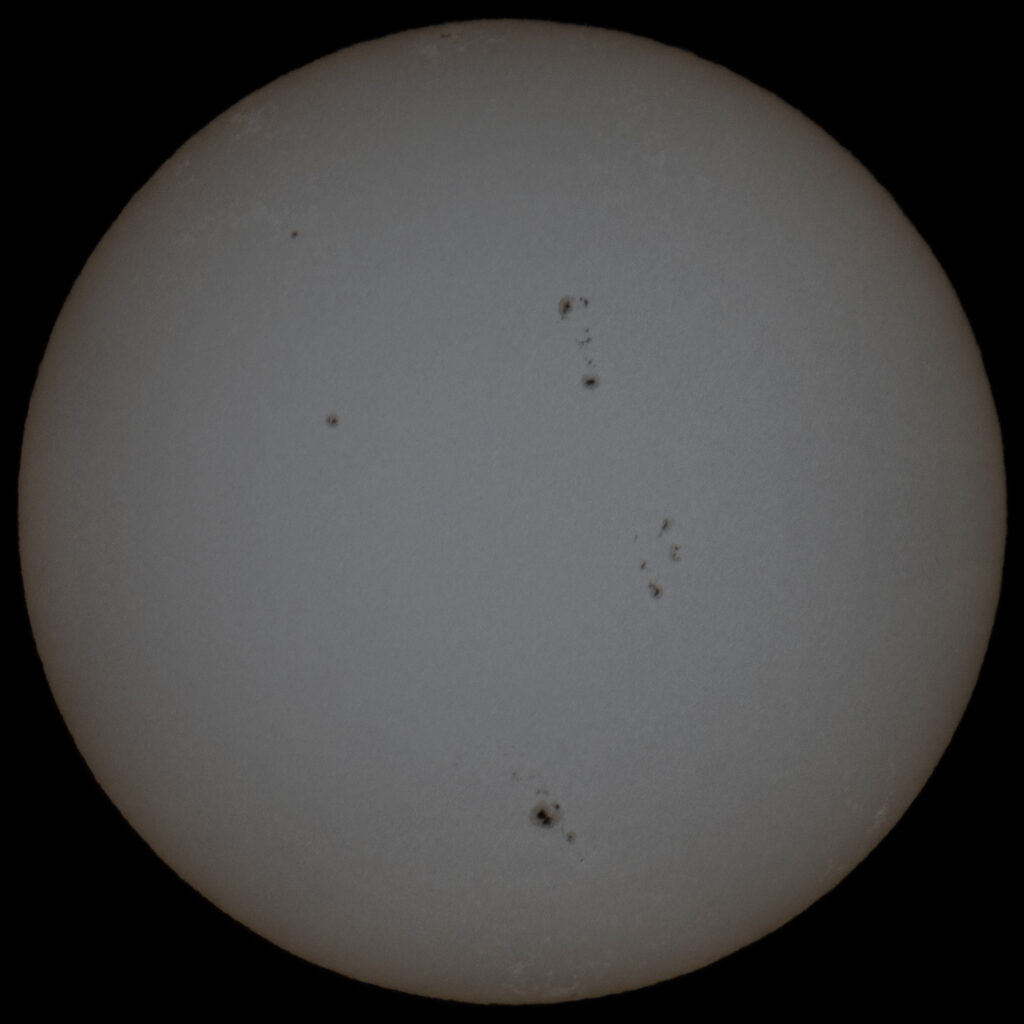
A spiritual experience
Griffith Observatory astronomical observer Vanessa Alarcon viewed the 2017 total eclipse from Casper, Wyoming. She describes it as an overwhelming, almost spiritual event. Alarcon tried to photograph the eclipse. In the intensity of the moment, her pictures were out of focus. She remembers the sky growing dark, and the stars coming out. But can’t recall what time or for how long. “To be honest, the last moment when it became totality, I don’t remember the details of how dark it got because I was just looking up, ‘whoa!’ I was just amazed looking directly at the sun.”
Alarcon will be in Texas on April 8 to view her second total eclipse. She also noted that a total eclipse is coming to Alaska on March 30, 2033. The solar corona, the outermost layer of the sun’s atmosphere, is only visible to us during total eclipses. The corona varies over time. Alarcon says each eclipse corona has a unique fingerprint.
“Some people are good at spotting them, ‘Oh, I remember that one, that one’s from 2017.’”
Vanessa Alarcon, Griffith Observatory, astronomical observer
There be dragons
Today we can predict that a total eclipse will be in Texas in 2024, or Alaska in 2033. The hardest part for contemporary humans is the astronomical prices of hotel rooms along the path of totality. Throughout history, people have been less informed about eclipses. They ascribed divine forces to them.
Alarcon notes that eclipses have always been intimidating events, “a dragon appears in multiple cultures. They think the sun is being eaten by a dragon. Everyone is trying to scare the dragon away to bring back normalcy.” As she describes this, Alarcon pulls out a cardboard pair of Griffith Observatory solar viewing glasses. The glasses have dragons winding their way across the temples.
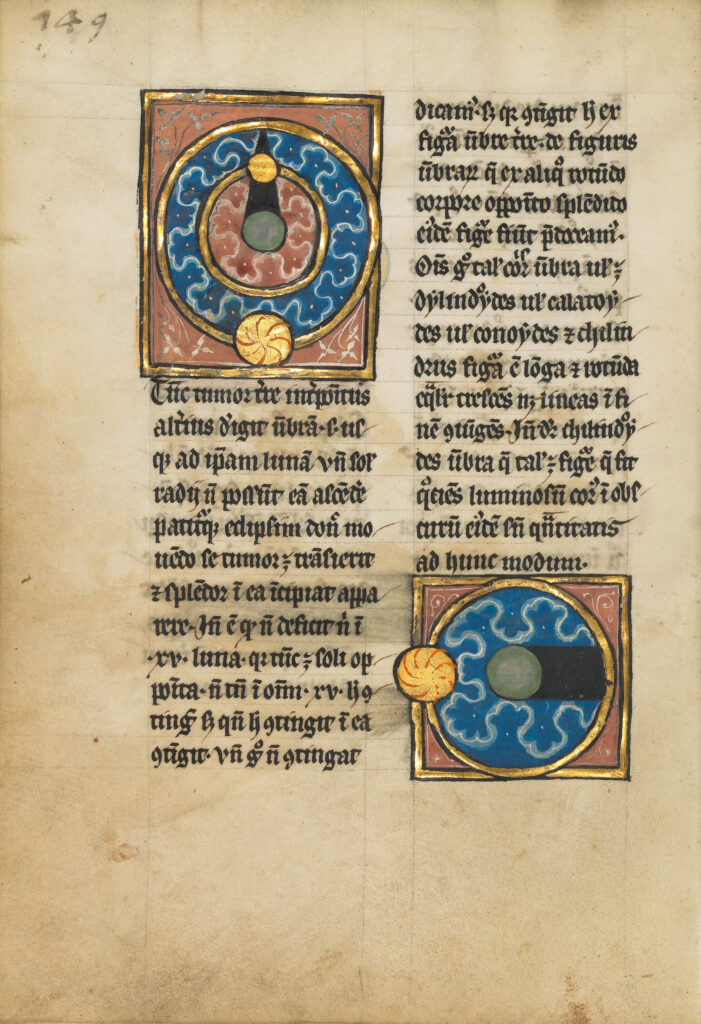
Get it while you can
Earth’s moon is moving further away at about the same rate that your fingernails grow: an inch-and-a-half a year. In a few million years the moon will be too small as viewed from the Earth and the age of total eclipses will have passed.
While there are only a few million years left in the big eclipse show, it’s different going into the past. A closer moon still makes total eclipses. Longer eclipses. The dinosaurs, 66-245 million years ago, and the trilobites, 251-542 million years ago, may have seen eclipses. At least, if trilobites could look up.
Whether or not trilobites were capable of gazing into the sky and contemplating eclipses, it’s worth reflecting on the fact that the Earth was the planet of the trilobites for 300 million years. The Earth has only been the planet of Homo sapiens for one-tenth of one million years.
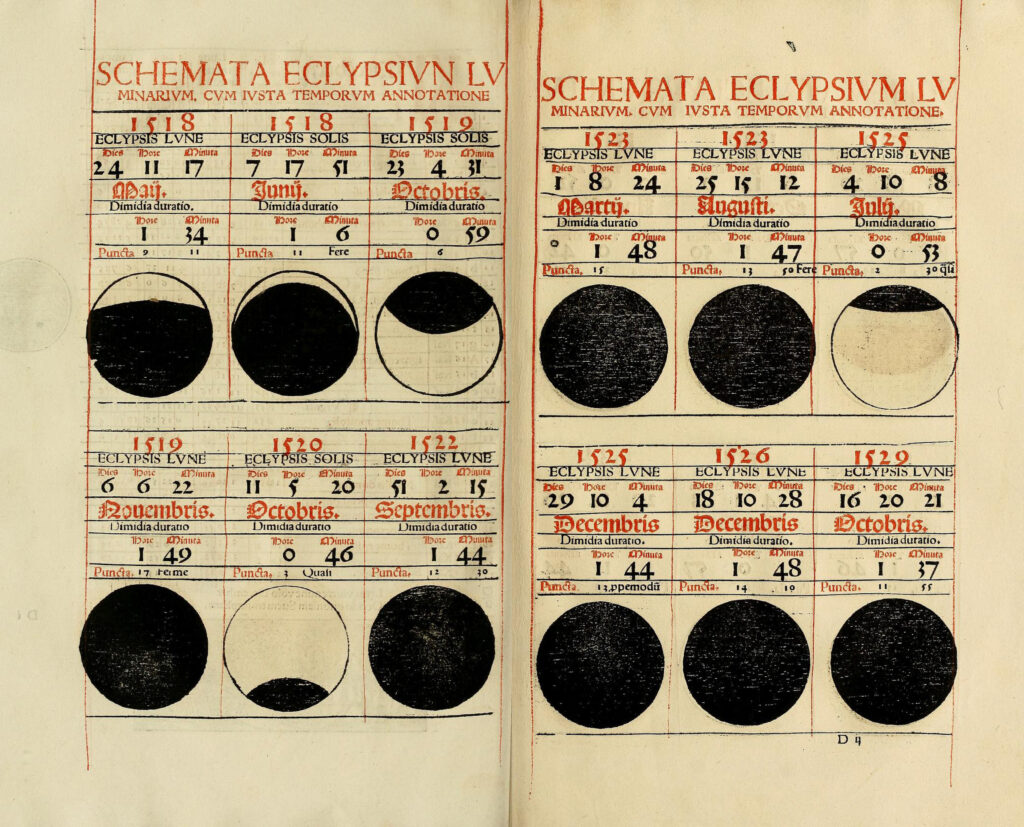
Momentous things
Larisa Grollemond, assistant curator of manuscripts at the Getty Museum, notes that in the Middle Ages astrology and astronomy were both science. She describes a Y1K anxiety somewhat like the Y2K anxiety we experienced 24 years ago. Feeding into that anxiety, she talks about an eclipse around the year 999 seen all over Europe. People of high rank had personal astrologers who interpreted eclipses and comets as divine signs from God. She says these events would be “interpreted by what’s convenient.”
Anne Woollett, curator of paintings at the Getty Museum, sees the Middle Ages as an “interesting moment in time when there’s a mixture of superstition and an effort to better understand phenomenon empirically.” Woollett explains that people still held on to the old belief that an eclipse precedes momentous things. “And not always good ones, either. Civil unrest. Death of a sovereign.”
Uniting with our ancestors
Today, we experience eclipses not in fear, or as retribution from God, but as bucket-list events worthy of expensive travel to remote locations. Science has made us different humans from our Middle Ages ancestors. Yet the human spirit remains unchanged in many ways. When we get out of the city and see the majesty of the Milky Way in the night sky, or see the astronomical marvel of the moon blotting out the sun, we experience a part of being human that stretches back to our most distant ancestors.
Safe Viewing
